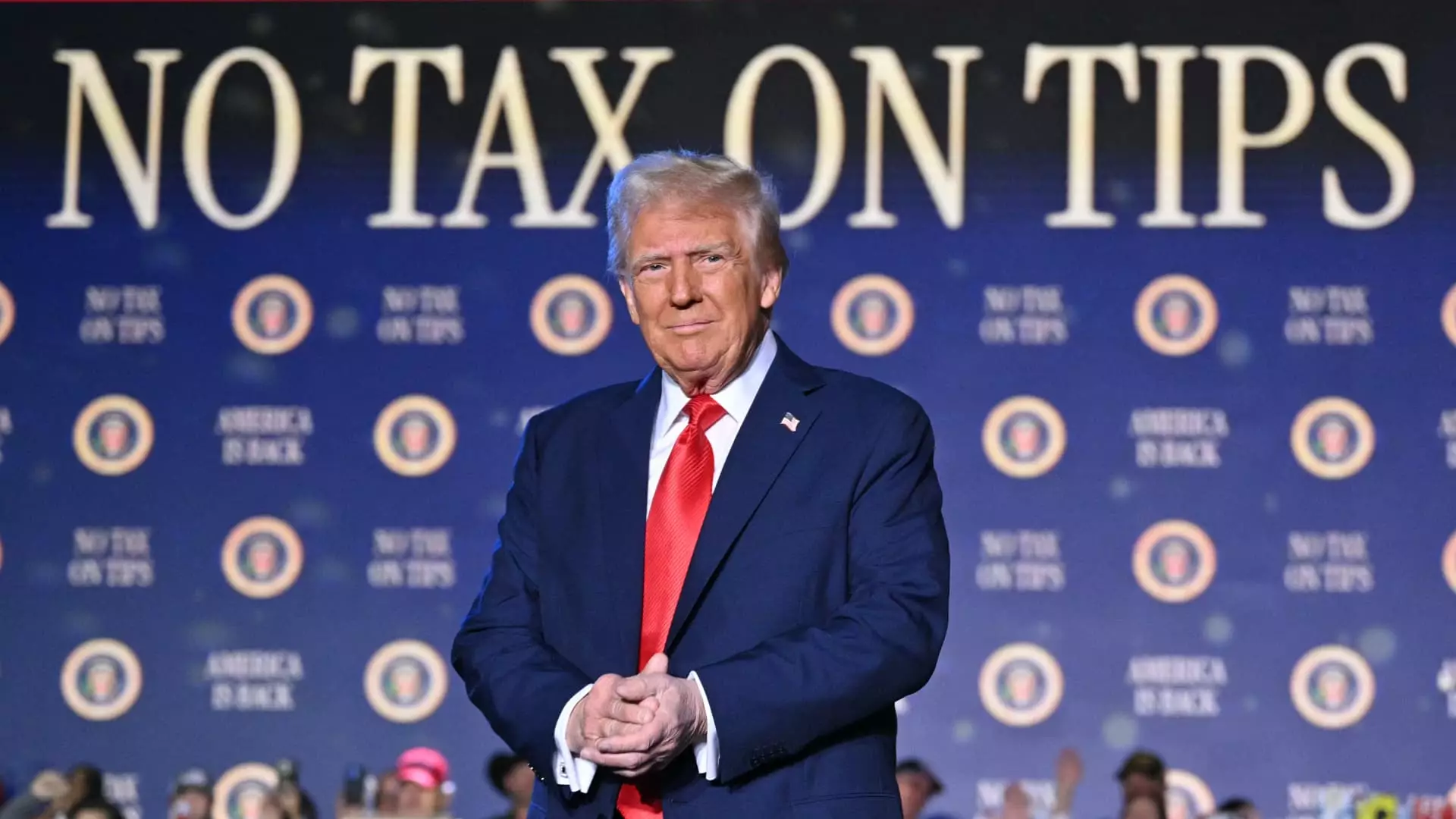In an era where economic disparity is increasingly scrutinized, the recent legislative move dubbed the “big beautiful bill” by President Donald Trump offered a glimmer of hope for millions of workers. Among its many provisions, the so-called “no tax on tips” segment was heralded as a breakthrough, promising to ease the financial burden on low-wage workers relying heavily on gratuities. Yet, beneath the surface, this measure reveals itself as an illusory benefit—short-sighted, poorly defined, and ultimately ineffective. Far from providing meaningful relief, it exposes a legislative oversight that favors the wealthy and overlooks the realities faced by service workers.
Misleading Simplicity: What “No Tax on Tips” Truly Means
At first glance, the phrase “no tax on tips” appears to suggest a fundamental change in how tips are taxed. However, a critical analysis reveals that this is a misnomer. The tax break doesn’t eliminate taxation on tips; instead, it introduces a deduction capped at $25,000, which will apply only within certain income limits and for a limited time. From 2025 through 2028, qualifying workers can potentially reduce their taxable income, but only if they meet specific criteria. This subtle nuance dilutes the perceived benefit, making it seem more generous than it truly is. It’s a disguised form of relief that offers minimal support to those it claims to help.
Eligibility and Implementation: A Shadowy and Confusing Landscape
One of the most glaring issues with this legislation lies in the ambiguity surrounding eligibility. While the law stipulates that tips must be “properly reported” to qualify, it leaves substantial room for interpretation. The IRS has yet to clarify which occupations fully qualify, an oversight that adds a layer of uncertainty for workers and employers alike. For instance, gig economy workers and those earning cash tips often operate in murky grey areas, potentially missing out on any benefit or unknowingly risking non-compliance. Moreover, the law distinguishes between voluntary tips and mandatory service charges, but the line is shaky at best. Automatic gratuities, common in many restaurants, could be deemed non-qualifying, leaving many workers unable to capitalize on the deduction.
The Reality of Underreporting and the False Promise of Fairness
Perhaps most troubling is the underlying assumption that workers are fully reporting their tips. In reality, cash tips and informal gratuities often go unreported, an issue exacerbated by the lack of rigorous enforcement. The legislation’s reliance on reported tips, including those paid through digital platforms like PayPal or Venmo, neglects the vast underground economy of unreported earnings. This oversight risks further marginalizing low-wage earners, who already operate at the mercy of inconsistent record-keeping and employer oversight. Instead of closing loopholes, the law inadvertently incentivizes underreporting and sustains a system rife with inequality.
Economic and Political Implications: A Narrow Win or a Costly Illusion?
Politically, the “no tax on tips” provision is framed as a victory for workers and small professionals, yet it subtly shifts the socioeconomic challenge onto the individual rather than addressing systemic flaws. For example, the benefit will phase out once income surpasses $150,000, making it irrelevant for the very middle-class workers it’s meant to assist. Meanwhile, the broader issues of stagnant wages, rising living costs, and the precarity of gig work remain unaddressed. This tax break serves more as a political appeasement than an equitable policy, providing a false sense of security while sidestepping meaningful reform.
The “no tax on tips” component of President Trump’s legislation is emblematic of a broader pattern in contemporary policymaking: window-dressing solutions that obscure deeper structural problems. While it feeds into political narratives of supporting the working class, it ultimately benefits the already privileged, offering limited, confusing, and temporary relief. Instead of confronting the root causes of economic insecurity—namely, wage stagnation, inadequate labor protections, and tax loopholes—this law perpetuates the illusion that small tax breaks can bridge the gap. It is a calculated move that masks the reality that genuine fairness will require more comprehensive, systemic change, not superficial legislative gestures.

